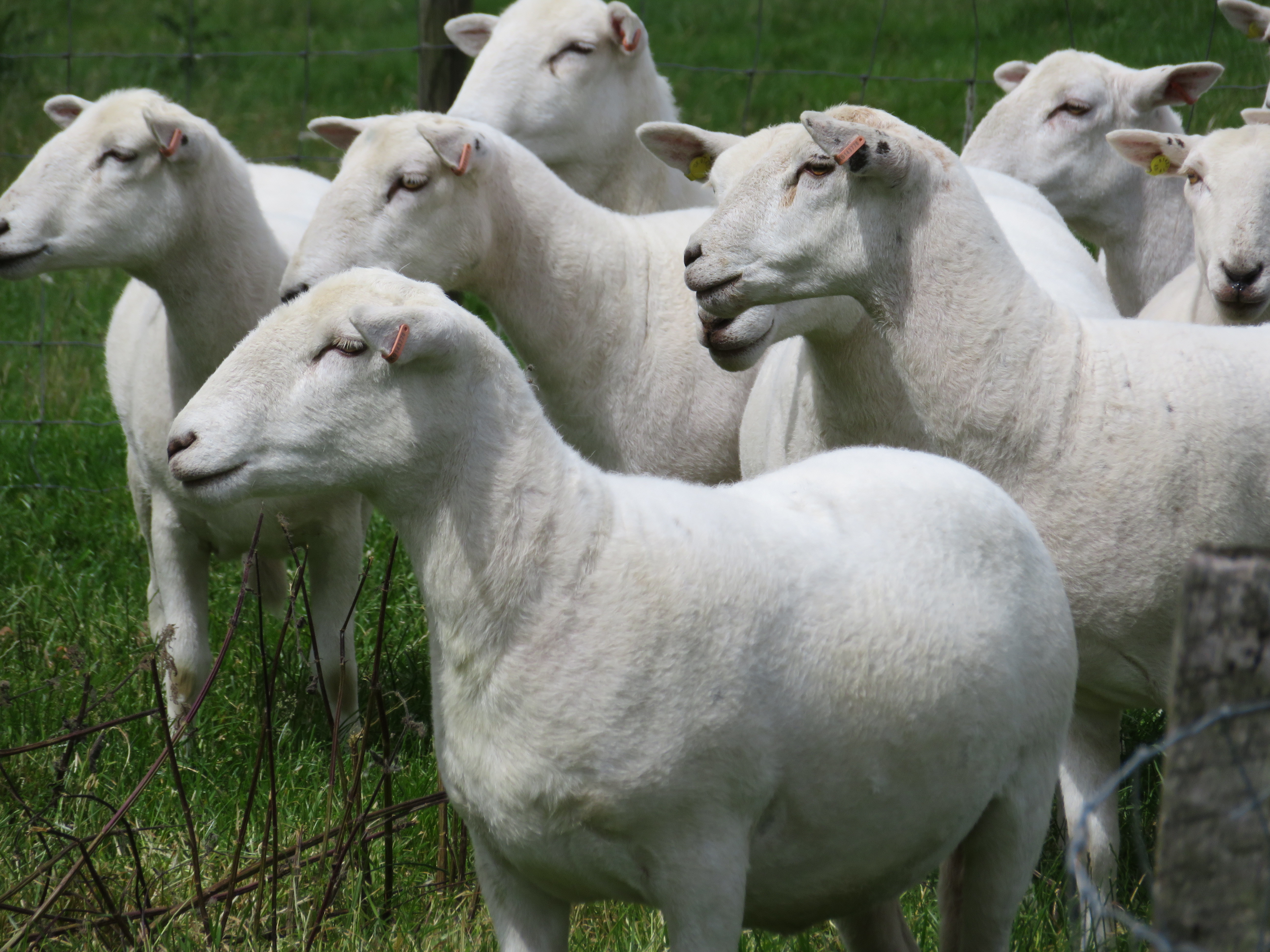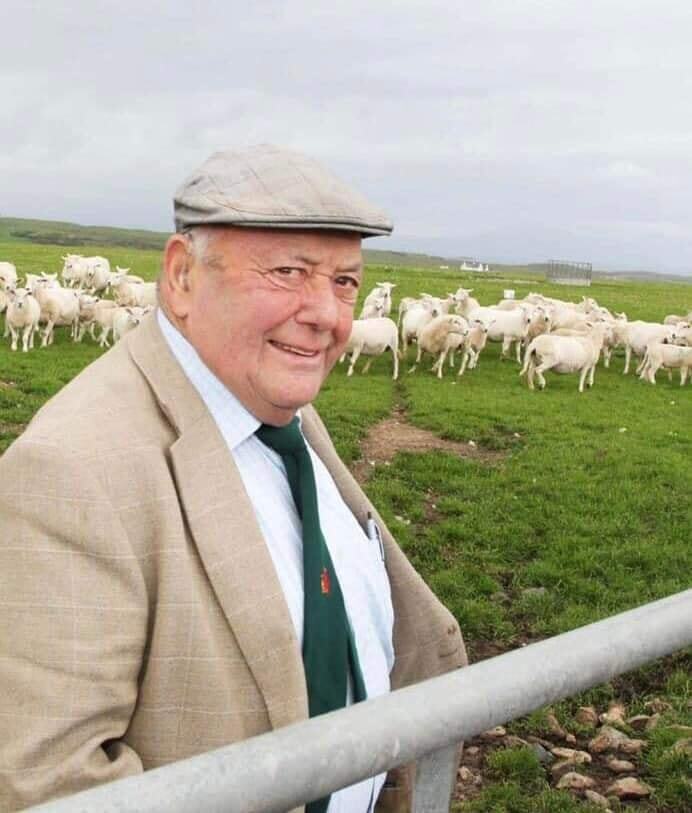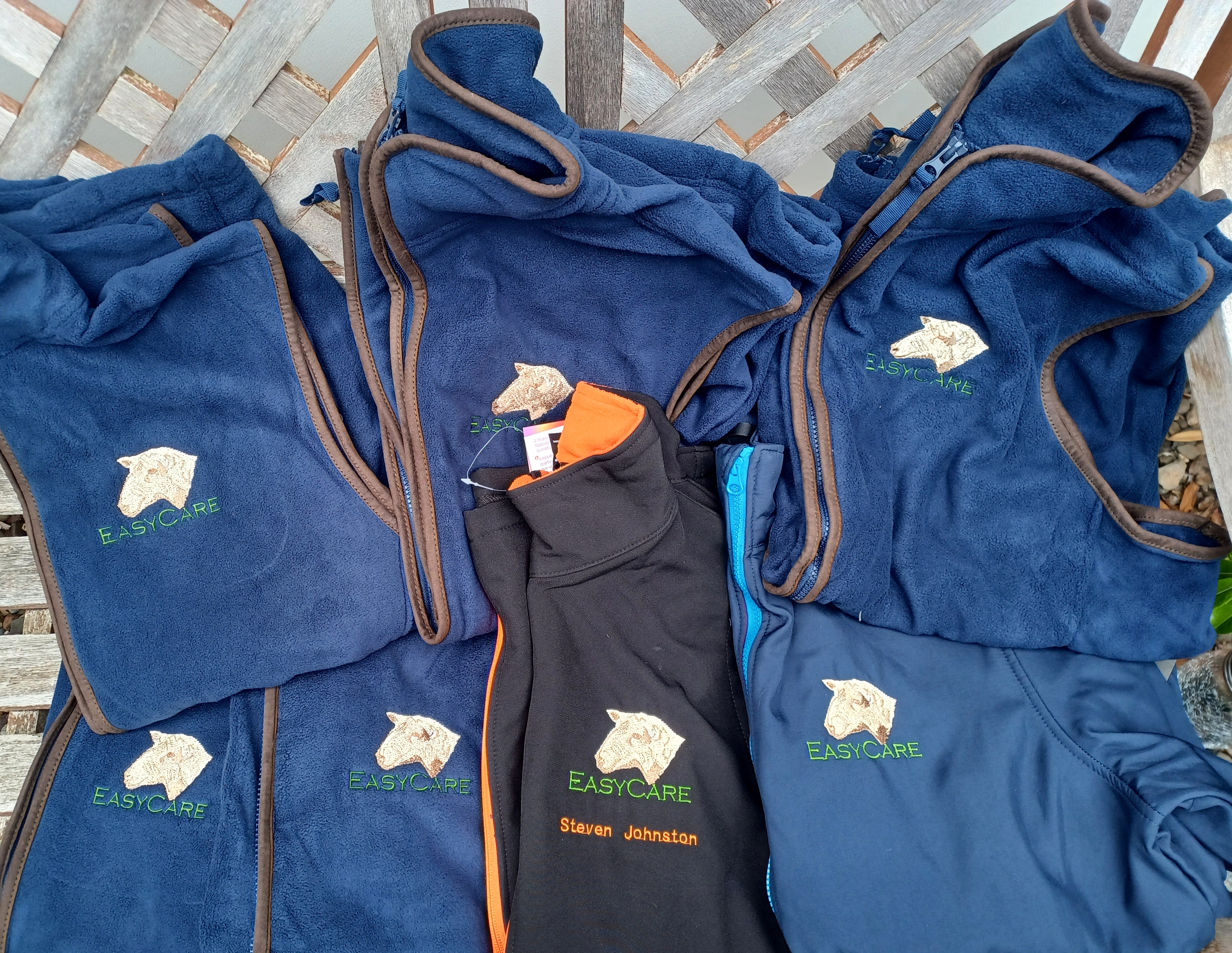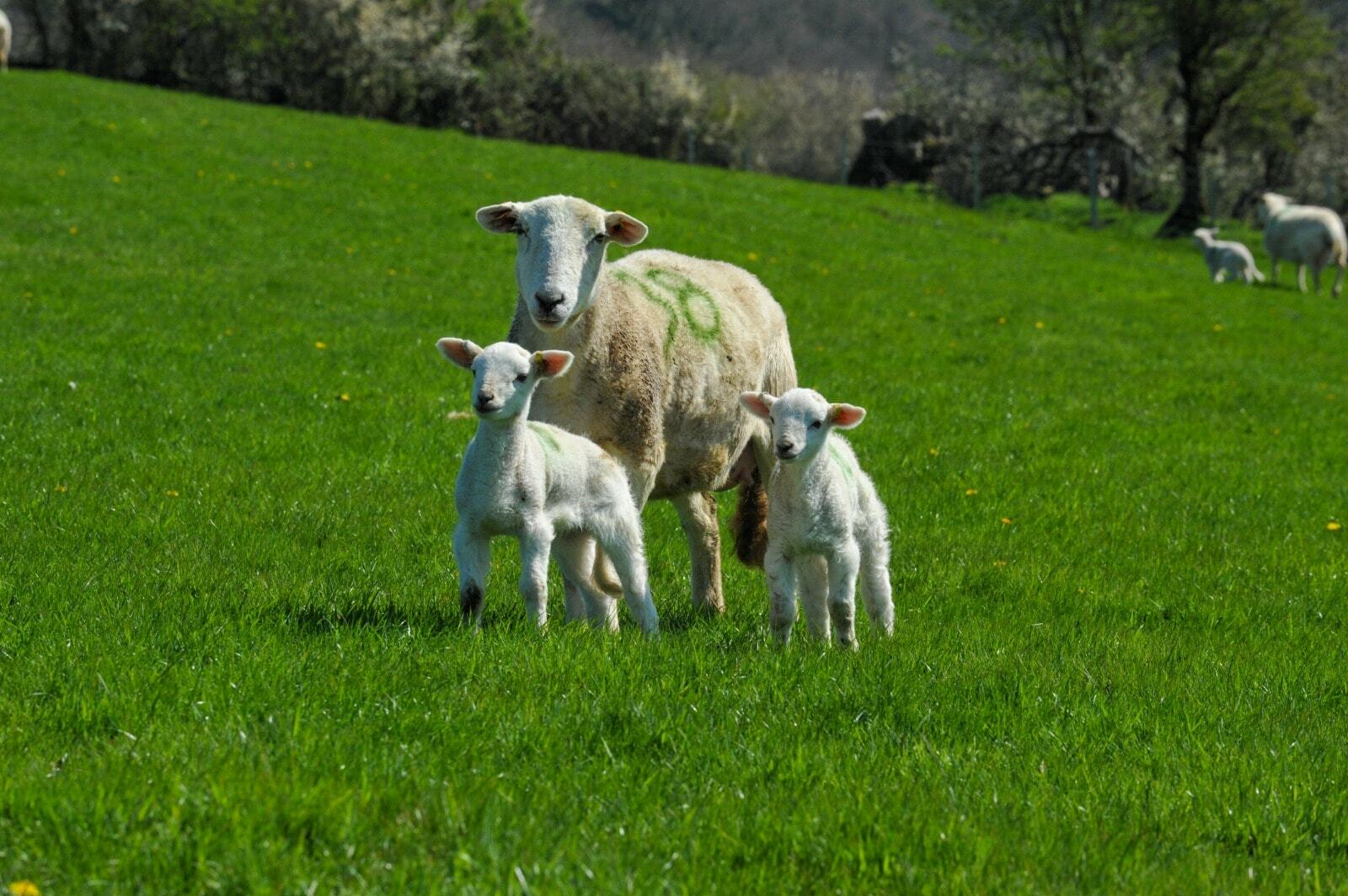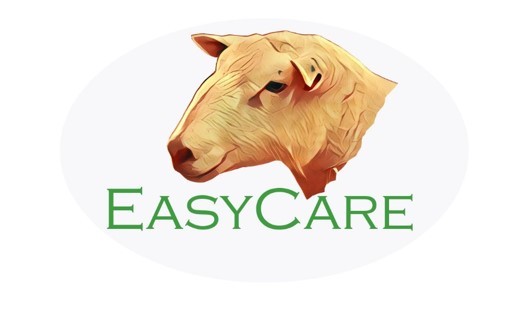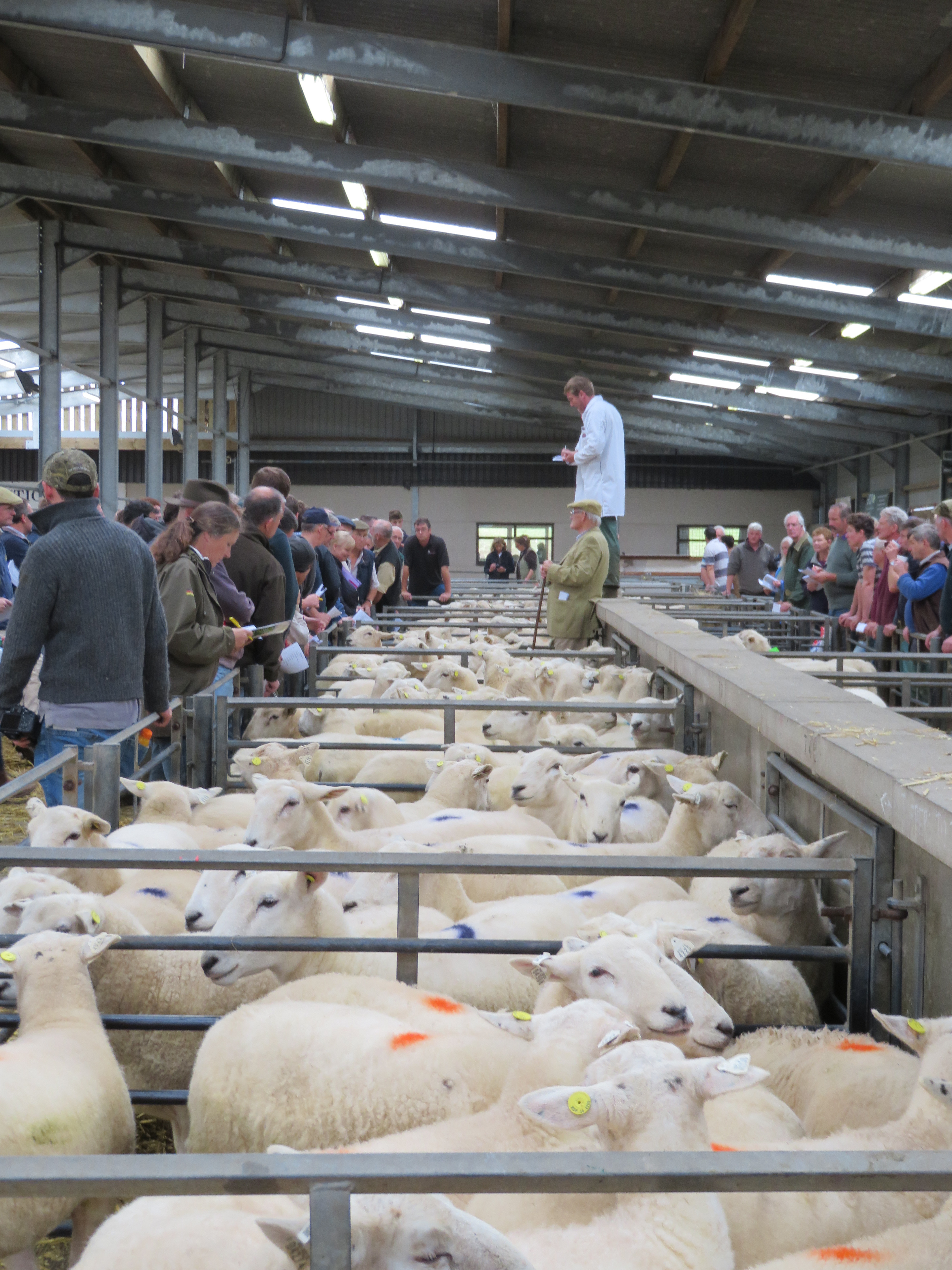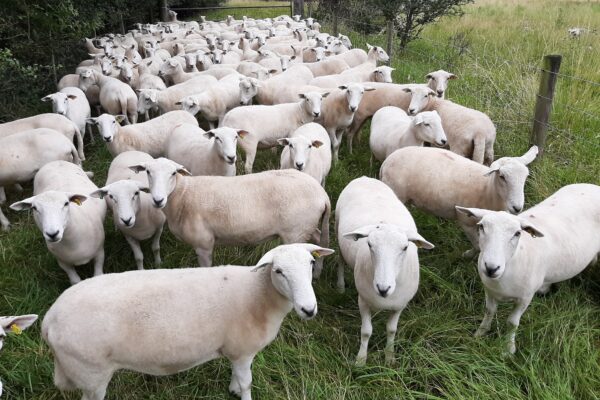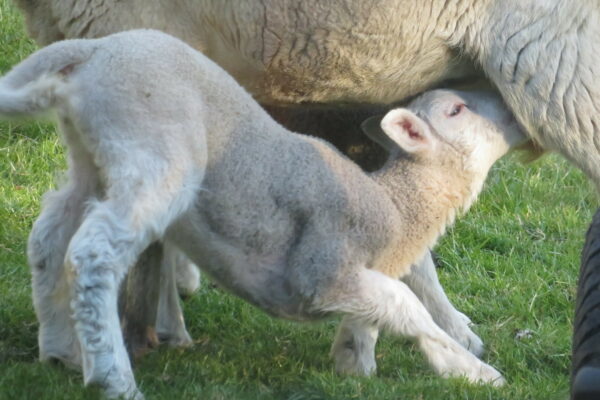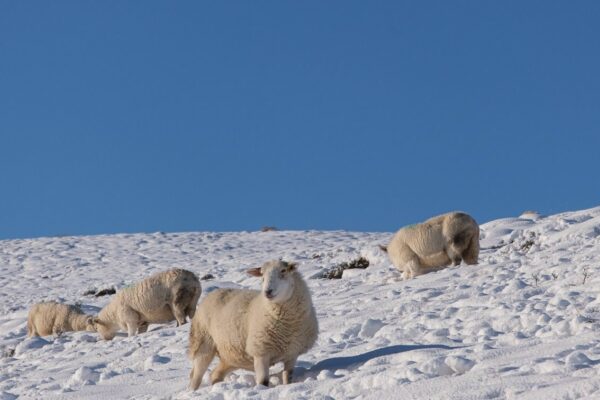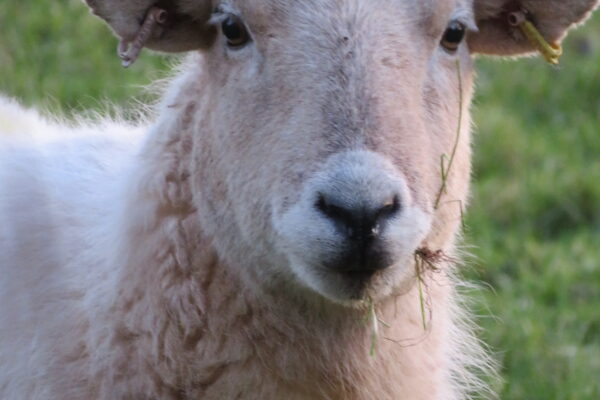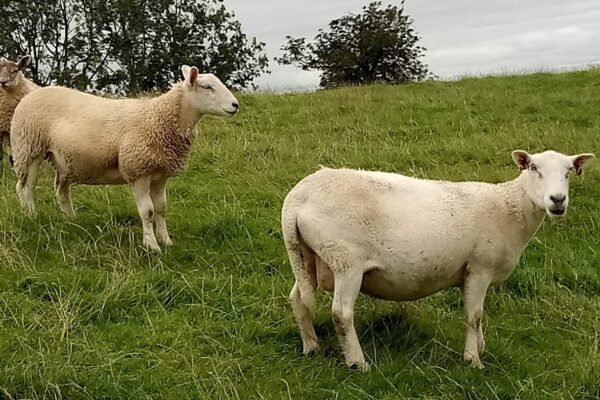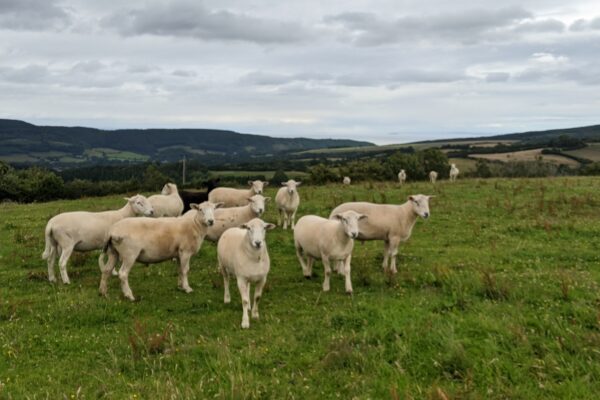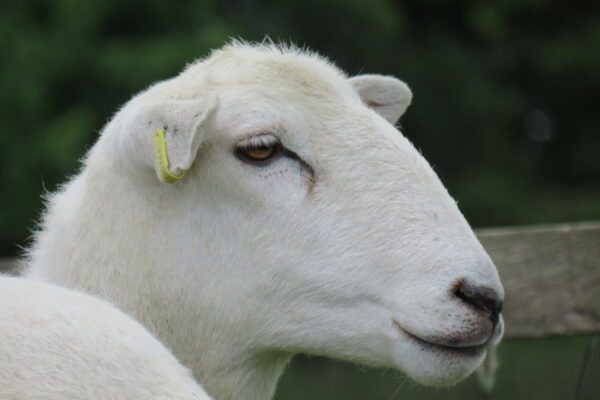LEADING THE WAY IN LOW CARBON FOOTPRINT AND LOW INPUT SHEPHERDING SINCE 1965.
EASYCARE, THE FIRST AND THE BEST. LEADING WHERE OTHER'S FOLLOW
The ultimate fleece shedding, low maintenance, prime lamb sheep breed. Specifically bred for ease of lambing, low input costs and maximum meat production
The EasyCareTM Sheep is a revolutionary breed of sheep which requires minimal shepherding and veterinary care, sheds its fleece in the summer, does not need shearing and yet offers excellent meat yields and lambing ratios. The fleece is kempy, leaving a dense hair covered in lanolin. The shed fleece rapidly decomposes as a natural soil conditioner. The breed seldom succumbs to heat stress yet the dense nature of their fleece means they can withstand harsh weather.
The ewes seldom require assistance at lambing. They have strong maternal instincts, are milky and will rear their lambs without human intervention.
The breed is a well-established commercial sheep with flocks of 1,000’s all over the UK, yet it is also an ideal sheep for the small holder. The rams can be used over other breeds to remove the wool. In three to four crosses the fleece should be shedding, this is ideal for hefted flocks as it means the flock remains on the hill yet acquires the benefits of the fleece shedding coat.
The breed is proving extremely popular and successful with breeders in today's farming environment. The EasyCareTM Sheep Society was formed to promote this wonderful breed and to ensure its continued development.
The Society has Society Sales in various regions of the UK. We also have the Annual AGM and Open Day at a different EasyCareTM breeder’s farm each year. The farm visits are viewed as an excellent way to meet new friends and network. We also attend National Sheep Association Events throughout the summer months.
The Society has Regional Co-ordinators who are all volunteers. They are there to help promote and discuss the breed with anyone who is interested in EasyCareTM Sheep. See theCo-Ordinators list for details.
Society Membership
£ 35
Per annum- Sell stock on the website & put photos on the advert
- Sell stock through Society Sales
- Receive regular Society newsletters throughout the year
- Pay by cheque, bacs or standing order
Latest News
EasyCare Sheep Ireland is up and running
EasyCare Sheep Ireland is up and running, Iolo Owen gave the project his blessing before he died and we look forward to getting the EasyCare sheep word out to a wider audience.
See what they are doing by clicking on the link
https://easycaresheepireland.i...
Read moreNEOGEN BLOODTESTING FOR SCRAPIE & MYOSTATIN
PLEASE NOTE THAT NEOGEN WILL ONLY ACCEPT NOSE SWABS FOR SCRAPIE AND MYOSTATIN TESTING FROM NOW ON DUE TO THE IRREGULAR RESULTS FROM BLOODS
Read moreDISCOUNT FOR EASYCARE SHEEP SOCIETY FULLY PAID UP MEMBERS ON DATAMARS AND SHEARWELL DATA TAGS
The Society has got discount for the Society members on sheep and cattle tags from two large manufacturers, Shearwell Data and Datamars Group formerly Roxan.
PLEASE TELL THE MANUFACTURER WHEN YOU ORDER YOUR TAGS THAT YOU ARE A MEMBER
The manufacturers will check you are a paid up member before they add the discount to your order.
EasyCare Breeding sheep tags must have EASYCARE stamped on them.
Datamars [was Roxan] - discount agreed for members
Neither Datamars or Shearwell Data charge any extra for management information to be printed on the tags
Datamars also offer a better price on cattle tags in addition and free replacements on their visual tags all offered whilst the animal is on the original holding of birth.
In addition to this they offer a discount on our ranges such as Tru-test Readers, Pel Electric Fencing, Animal Health Simcro & NJ Phillips, Kaiwaka Stormforce to name a few.
amy.jones@datamars.com 07951 969087
Shearwell Data5% DISCOUNT ON TAGS, BOTH CATTLE AND SHEEP
Updated July 2024
Read moreMERCHANDISE FOR EASYCARE MEMBERS
The Society has linked with Lauren Garbutt to allow members to buy merchandise with the EasyCare logo on.
You can buy directly from Lauren. You can buy double zipped fleece gilets and jackets, base ball caps and soft shell jackets and gilets. The fleece gilet with farm name, your name and our logo is £30.
You can put extra wording on the back for an additional fee.
Deal directly with Lauren by email
lauren_garbutt@outlook.com
Read moreSUBSCRIPTIONS AND EMAIL ADDRESSES
THE SUBSCRIPTION FOR A YEAR CHANGED TO £35 ON 1ST JUNE 2024.
PLEASE PROVIDE OUR TREASURER, JUNE TAVERNOR, WITH ANY CHANGES TO EMAIL ADDRESSES AS WE ARE GETTING A LOT OF RETURNED NEWSLETTERS FROM 'NOT RECOGNISED' EMAIL ADDRESSES
WHEN PROVIDING YOUR EMAIL ADDRESS PLEASE DO IT CLEARLY TO PREVENT ERRORS
Updated July 2024
Read moreSOCIETY SALE PROTOCOL FOR SELLING RAMS AND EWES
Rams & ewes - Society Sale Protocol
We ask that breeders check their rams prior to selling. Do a check of the testicles, make sure the rams are good with their mobility etc as we will pull out anything we feel is not to breed standard [see the Breed Standard on the website] or is suspect in mouth, legs, feet, or testicles.
With regards to a fertility test we have reserved judgement on this as to be honest it simply states on the day it was tested it was fertile but from the sale in September to the rams going out at the beginning of November onwards anything can happen to them which is beyond the Society's control. Therefore, it is prudent to either put extra rams out or take up insurance.
Ewes must be sound in the udder, legs, and mouth. They must have fully shed their fleece without assistance. They must be clear eyed and free of any injury or lameness.
All rams and ewes presented for sale must be tagged with double tags bearing the word EasyCare or EC on their tags.
If you are MV accredited you will need to provide the paperwork beforehand to the auction mart and they will provide separate accommodation. All MV accredited stock is sold first into a clean ring. The Society does not currently require all stock to be MV accredited. Most, if not all markets ask that stock is dipped or jabbed for scab. Withdrawal dates must be noted and stated on the entry form.
With regards other health checks, if the vendor has carried out certain procedures e.g. Heptovac, worming etc we ask that this is made known prior to the sale so it can be put in the particulars. If blood tests have been taken to establish a ram's myostatin status or scrapie status, again the reports for these tests must be shown to the market and the information presented in the particulars. We also recommend you laminate copies of the test results and put them on the selling pen as it makes it clear to prospective purchasers what they are buying. Provide the results to the purchaser after the sale so they have the results for their own records.
Any further health checks are entirely at the vendors discretion we would simply say that it is good farming practice to isolate newly purchased stock for a period to assess their health.
If the seller has in mind to make their stock available for export, they must be MV accredited, must have an up-to-date Brucella test and possibly more legislation could be in force by the time the September sales arrive so a visit to the Animal and Plant Health website is always a good idea.
As a Society we can only make a judgement based on what we see on the day. We make it clear to everyone to present strong, healthy stock in the best condition they can but without overlooking the fact that we are a commercial breed and purchasers don't expect rams to have been stoked full of food or preened and polished.
We do not issue pedigree certificates.
Finally, you must be a fully paid-up member to enter the Society Sales. Membership is £35 per annum.
Read moreTHE MYOSTATIN GENE - EXPLAINED
The myostatin gene in the EasyCare Breed
The myostatin gene in sheep denotes an increase in lean meat percentage and a reduction in fat content.
First discovered by scientists in Australia, the gene is most prevalent in the Texel breed, but luckily the EasyCare breed to some extent, also carries it.
When individual animals are tested for the gene, the results from the laboratory will signify a negative, a single copy myostatin denoted by a T+ or a Twin copy denoted as a T+T+, which could be described in conversation as being a Myomax Gold carrier. Gold is a double gene carrier. A single carrier is often referred to a Myomax Silver. This is a single copy carrier. No gene present will be denoted as wildtype. The report can also say carrier which means the animal has one copy of the gene.
Breeders who need to improve their carcass grades in pure bred EasyCare sheep will find that by using a ram with a single copy myostatin, 50% of the progeny will produce some 5% extra lean meat.
Those however, who use a ram with a twin myostatin copy will expect two advantages within their flock. Firstly, all progeny will possess an extra 10% lean meat and 7% less fat content which means of course that lambs can be taken to extra weights before being penalised for being over fat.
The second advantage to using a double myostatin ram is that all of his progeny will carry at least one copy of the gene. This is of course a simple but effective way of introducing the myostatin gene to all replacement stock.
By persisting with a double copy ram, all the flock will carry the gene within four or five years.
It is worth emphasising that there are no disadvantages to introducing the myostatin gene. Any fear of lambing difficulties can't be ignored, this is one element which we must retain at all costs but science shows the presence of the gene has no effect on lambing ease.
One thing that is worth pointing out is that there is no connection between a myostatin carrier and growth rate and therefore it is a wise move to test only lambs which you feel are above average weights at testing time.
Only test rams without horns and who are fully fleece shedding, have sound legs, good jaws and teeth and good feet. A bad sheep is a bad sheep regardless of whether is carries a double copy of the gene or not.
It goes without saying that it is absolutely vital that there is no cross contamination of blood samples as that will render the whole test a waste of time. Gloves must be used, new ones with each animal. You can take nose swab samples to get the necessary fluid to test for the gene. You must get plenty of 'snot' on the swab.
It is worth repeating that there are no negative effects to the gene and that you can proceed with confidence of a positive outcome for carcass improvement. The percentage of O grades will decrease significantly and R3Ls with some U's will dominate the grading sheets.
If you are considering testing for myostatin it is good practice to also include request for a scrapie test as well. It is desirable to get as many ARR/ARR tested rams into the breeding population.
All test results must be shown to the purchaser prior to sale and must go with the animal when sold.
By Huw Thomas [edited and updated by Louise Hobson] UPDATED JUNE 2023
NEOGEN in Ayr can be used to test the samples. Ring 01292 525600 and ask them to email you an EASYCARE SHEEP recording form and nose swab kits. You pay over the phone. 20 kits cost circa £52 with VAT. Each is wrapped individually and has its own code to place alongside the ear tag number.
IT IS ESSENTIAL YOU COLLECT ENOUGH BODY FLUID ON EACH SWAB TO GET BOTH THE MYOSTATIN AND SCRAPIE TEST DONE WITH EACH TEST.
Read moreThe Society Breed Statement & Mission Statement
The Society Breed Statement & Mission Statement
The EasyCare Sheep is a fleece shedding, medium sized, white, polled sheep capable of lambing without assistance and rearing their lambs off grass. The sheep is a commercial breed. EasyCare Sheep cannot be entered into breed shows as the breed founder, Iolo Owen, feels that the sole object of showing is to emphasise traits that may ruin the easy lambing aspects of the breed he has spent half a Century developing.
The true EasyCare Sheep must not be appear to be over fed, over-sized or crossed with terminal type sires to enhance unwanted characteristics, these being broad chests, big heads, big back ends, poor feet or none fleece shedding coat – this list is not exhaustive and the Society reserves the right to remove any sheep they believe do not conform to the true EasyCare Sheep breeding from Society Sales.
Where EasyCare Sheep are being sold privately via either members or non-members, it is for the purchaser to make sure they are confident they are purchasing a true EasyCare Sheep. BUYER BEWARE.
The name EasyCare and the logo is Trademarked to the EasyCare Sheep Society.
What the Society does:
We promote the true EasyCare Sheep breed as developed by the late Mr Iolo Owen MBE of Glantraeth, Bodorgan, Anglesey via the means of:
Society Sales
Newspaper adverts
Newspaper articles
Stands at National Sheep Association events
A website
A Facebook Page
Instagram
Society Open Days & AGM
We ensure the breed is represented correctly at Society Breed sales but will not handle the sheep presented.
For clarification:
The EasyCare Sheep must not have been sheared or plucked
The EasyCare Sheep fleece must shed to leave a hair coat through the summer months
The EasyCare Sheep must be hornless
The EasyCare Sheep is white in colour but small dark spots and darker patches are normal.
The EasyCare Sheep female is 60 – 70 kg at mature weight depending on where it lives
The EasyCare Sheep male is 80 – 100kg at mature weight depending on where it lives
The male should be slightly wedged shaped at the shoulders to ensure ease of lambing
The EasyCare Sheep should ideally have a slim ‘rat tail’ type tail
It is preferable that breeders keep the EasyCare Sheep’s tail intact but not essential
Legs must be strong and straight and feet must be sound
The EasyCare Sheep is a commercial breed, we do not ‘show’ EasyCare Sheep
EasyCare sheep must be tagged with tags bearing the name EASYCARE on the tag. The breeder can use any tag manufacturer of their choice
EasyCare sheep do not have pedigree certificates and are not referred to as being pedigree. We do not have a flock book
The Society day to day running
The Society day to day running is managed by the Secretary, currently Mrs Louise Hobson and the Treasurer, currently Mrs June Tavernor. The Society Chairman is currently Mr John Thomas
We provide a website as a platform for fully paid up members to sell their sheep from. Please send your preferred wording and photos to the Secretary using the email address info@easycaresheep.com
We provide the website to inform the public about the breed. The website has the details of upcoming events and is always being updated
We have an annual AGM and Open Days and provide the means of allowing breeders to have more on farm events if they wish to. The AGM moves location every year
We attend the National Sheep Association events around the UK to put the breed in front of prospective buyers. The Society is a Corporate Members of the NSA
We provide voluntary regional co-ordinators to discuss the merits of the breed to prospective buyers
The Treasurer collects £35 annual subscription/member which helps to pay for the promotion of the breed
All Office Holders are volunteers
We have a steering committee which meets up to twice a year via Zoom or similar platform to discuss the way forward for the breed. Any member is welcome to become a Co-Ordinator. There is no payment for this commitment but we expect you to help with NSA events and Open Days
A quarterly newsletter is sent to all fully paid up members via email. It is for the Society members to keep the Treasurer updated with your email address details
All contact details for Co-Ordinators and Office Holders are on the website
Revised July 2024
Read moreEasyCare Sheep - Take care when purchasing from social media sites
EasyCare sheep are not pedigree nor are they 'registered', nor do we have a flock book. The Original True EasyCare sheep have been bred over the last 50 + years by the late Iolo Owen at his farm on Anglesey. The Original True EasyCare sheep is one derived from his flock. That sheep is derived from mixing breeds and a lot of hard work.
Read more



